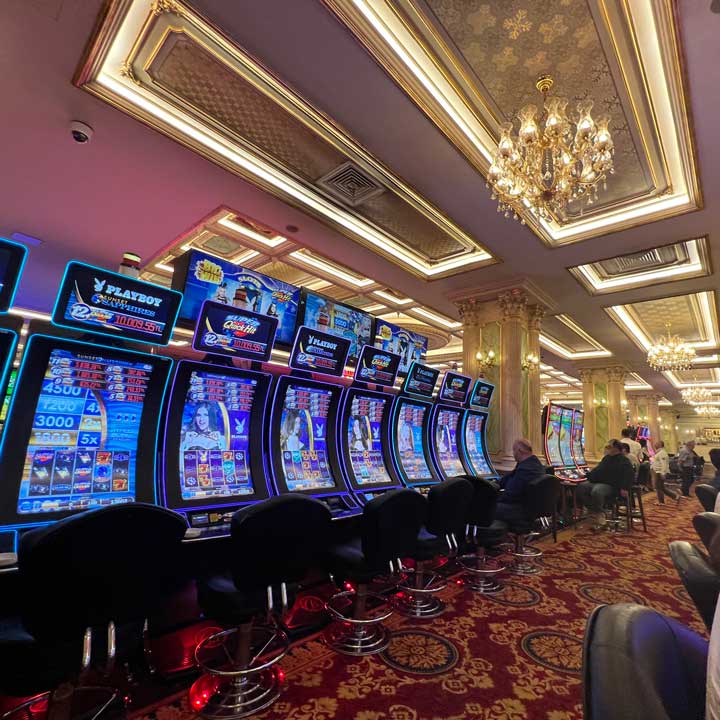
How Gambling Games Use Hue and Design to Draw Gamers

Within a lively and exciting world of gaming establishments, where fortune and strategy intertwine, hues and design play a critical role in drawing in players. As soon as players step into a casino or log into a gaming website, they are immersed in a sightly feast that captures their attention and entices them to discover more. Vivid colors, engaging graphics, and creative layouts are meticulously crafted to create an atmosphere of excitement and anticipation, ultimately improving the gaming experience.
While players navigate through the ever-changing landscape of casino games, they encounter a variety of designs that not only serve aesthetic purposes but also affect feelings and decision-making. Colors like red and gold symbolize wealth and luck, while calm blues and greens can create a much relaxed environment. Grasping how these elements work together enables casinos to create an inviting and stimulating atmosphere that encourages players to interact with the games, spend additional time at the tables, and boost their overall enjoyment.
The Psychology of Tint in Gaming Establishments
Color plays a critical role in the design of gambling games, influencing player emotions and responses. Lively and vibrant colors, such as scarlet and amber, are often used to stimulate excitement and draw notice. These hues create a sense of pressure and vitality, encouraging participants to engage more eagerly with the experience. By strategically selecting tints, designers aim to elicit emotions of pleasure and excitement, which can enhance the overall gaming experience. oke179 life
Distinct hues also have psychological connotations that can affect how participants perceive their odds of success. For case, emerald is often associated with good fortune and abundance, making it a well-liked choice in games like roulette and poker tables. This link can cause gamblers to feel more positive and self-assured in their gameplay, ultimately encouraging them to wager more. Comprehending these connections allows game designers to craft environments that enhance player satisfaction and engagement.
In addition, the design of gambling game interfaces often employs blended colors and differing hues to instruct players' responses. For case, winning outcomes may be emphasized with bright, opposing colors, creating a visual incentive. This method supports positive outcomes and promotes repeated participation. By utilizing the science of color, gambling establishments can develop games that not only captivate participants but also hold them involved and invested in their gaming experience.
Design Elements that Engage Gamers
The aesthetic appeal of casino games is largely influenced by the use of vibrant colors. Bright and striking colors are strategically chosen to create an appealing atmosphere that captures interest. For example, crimson and golds often signify luck and wealth, which is why they are prevalent in the color schemes of slot machines and game surfaces. These colors not only attract players in, but they also evoke emotions related to excitement and expectation, enhancing the overall gaming experience.
In addition to color, the aesthetic and layout of gambling games play a significant role in player attraction. Games are designed to be user-friendly, ensuring that players can quickly understand the rules and gameplay. User-friendly interfaces, along with engaging graphics and animations, help maintain player interest and promote extended play sessions. The physical elements, such as the texture of the buttons and the audio of the games, also add to a holistic sensory experience that keeps players engaged.
In conclusion, thematic elements in game design can significantly influence gaming decisions. Many casino games are inspired by media, myths, or exploration motifs, featuring symbols and characters that resonate with players. These themes create a sense of engagement and connection, making each game feel unique. When players feel a bond to the concept, they are more likely to opt for that game over others, leading to increased participation and enthusiasm within the casino environment.
Case Studies: Notable Gambling Slot Designs
One prime example of successful gambling game design is the well-known slot machine series themed around popular movies. Games such as those based on the Wizard of Oz and Game of thrones utilize vibrant colors and high-quality graphics to enthrall players in recognizable narratives. The use of lively visuals and engaging sound effects grabs the attention of players, creating an emotional connection to the theme. This approach merely encourages longer play but also improves the overall gaming experience, leading to increased player retention.
Another notable case is the application of the psychology of color in table games like blackjack and the wheel. Casinos often develop these games with rich reds and greens, colors traditionally linked with luck and wealth. For instance, the emerald felt on a 21 table provides a calming effect, while the crimson accents in the wheel invite thrill. This deliberate use of color helps to foster an inviting atmosphere that encourages players to engage, addressing their psychological impulses and enhancing their enjoyment.
Finally, online casino games that feature social features and lively, dynamic designs have experienced remarkable success in engaging players. Games like Zynga Poker and Slot-O-Mania leverage striking colors and playful animations to forge an inviting online environment. The inclusion of leaderboards, community sharing options, and in-app rewards fosters competition and community, attracting players in for longer sessions. Such designs not only make the games visually enticing but also highlight social interaction, a vital factor in player retention and engagement within online casino environments.